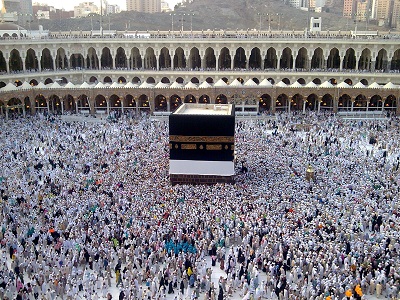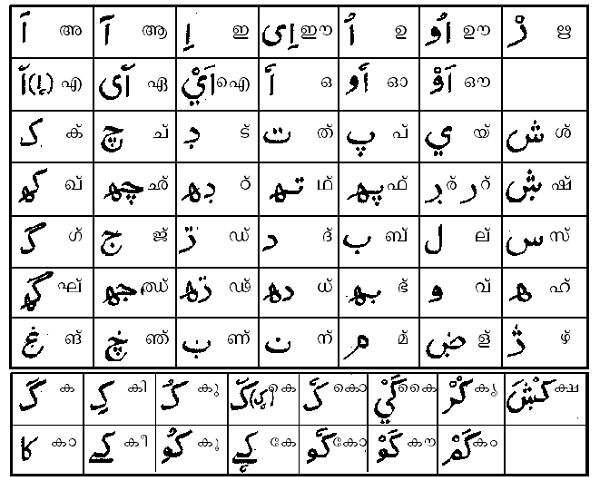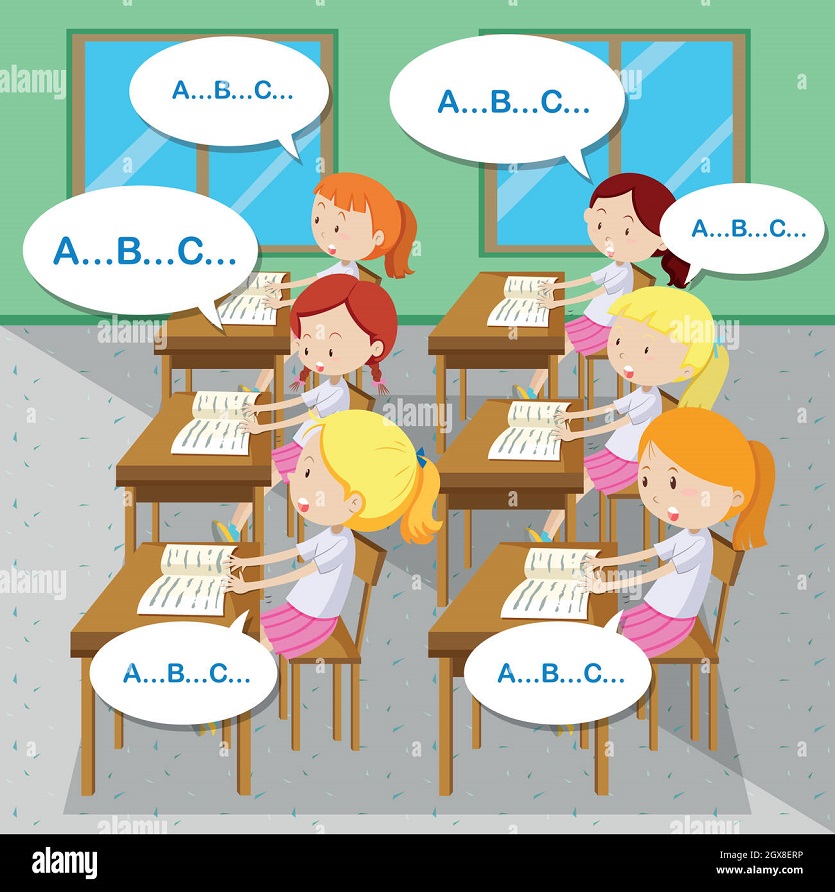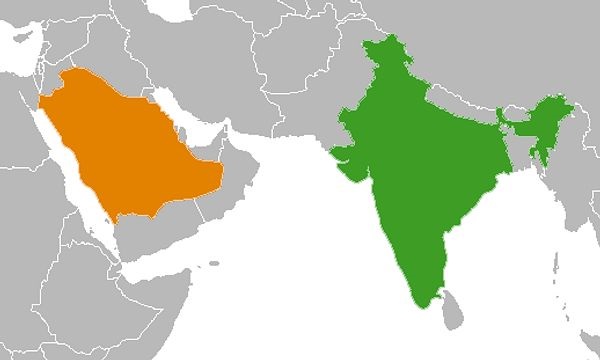The Makkah Siege and Its Dark Shadow on Saudi History
Abul Kalam
PhD Scholar, Centre for West Asian Studies (CWAS), JNU, New Delhi
In 1979, an unthinkable, unimaginable, and unprecedented incident occurred in the Holiest Place of Islam, Masjid Al Haram, also known as the Grand Mosque in Makkah, shocking Saudi Arabia and the Muslim world. A young man aged 40 years named Juhayman Bin Muhammad bin Saif Al Otaybi, along with hundreds of his followers, stormed the Grand Mosque with arms and guns and declared the "Arrival of the Real Mahdi." The incident occurred on 20th November 1979, the first day of the Islamic New Year of 1400 AH, the first month of the Islamic calendar, the Muharram. It was early morning after the Imam of the Grand Mosque had finished the Fajar prayer.
According to Imam Sheikh Mohammad Al Suabyil, in an interview with Arab News in 2012, "While I was praying, I saw dozens of armed men coming towards Kaaba.” Juhayman’s men pushed back the Imam Suabyil, a 55-year-old Grand Mosque’s imam. Sayid, brother of the supposed Mahdi, Muhammad Bin Abdullah Al Qahtani, announced on the microphone, "Fellow Muslims, we announce today the coming of the Mahdi who shall reign with justice and fairness on Earth after it has been filled with injustice and oppression; countless visions have testified to the coming of the Mahdi." Prince Turki Al Faisal, the head of Saudi Arabia's General Intelligence Directorate in 1979, in an interview with Arab News, said, “According to their beliefs, they aimed to liberate the Grand Mosque from the apostate rulers of the Kingdom and to liberate all Muslims by the coming of the so-called Mahdi." Juhayman immediately demanded- (1) the Return to Original Islam, (2) the Rejection of the West, (3) the Abolition of Television, (4) the Expulsion of Non-Muslims from the Kingdom, (5) Al Saud lost his legitimacy because of corruption, (6) Establish Theocracy. The whole concept of the Mahdi (the Guided One, A Redeemer or A Messianic Figure) is a religious offshoot found in Abrahamic religions, such as Judaism, Christianity and Islam. It describes the Mahdi as someone who will bring peace and justice to the world by the grace of God. Once he comes, there will be no injustice. Everybody will be in good health, prosperity, and well-being. Mahdi is not a name but the title of the person who came before the Day of Judgment. There are 20 Hadis references regarding the Mahdi finds in Hadis (such as Bukhari, Sahih Muslim Hadis No. 2913, Abu Dawood Hadis No. 3604 & 4682, Musnad Ahmed Hadis No. 645 and Sunna Al Tirmidhi). According to Hadis, the Mahdi will be standing between the Rukun Yamani (near Black Stone, also known as Hajr Al Aswad) and Maqam-E-Ibrahim. People will give an Oath of Allegiance (Bayat). His and his father's names will be the same as the Prophet Muhammad's, and they are from the Quraysh tribe. Coming of the Mahdi will be the minor and one of the signs of Judgment Day. Although the Mahdi is not mentioned in the Quran, scholars are divided among themselves. They have different opinions over the meaning of the several passages of Hadis in which this concept is mentioned. The theologian and the Quranic scholar Javed Ahmed Ghamdi have written that although, in some interpretations, the coming of the Mahdi is regarded as a sign of the imminent Day of Judgment. The narratives of the coming of the Mahdi do not conform to the standards of Hadi's criticism set forth by Hadis scholars.
It was the month of the Muharram, just after the annual Hajj, in which almost 50,000 pilgrims were there. Most of them were non-Arabic speaking people. He spoke in Arabic since many foreigners were unable to understand it. His followers had forced many pilgrims to give the oath of allegiance to the Mahdi, named Muhammad Bin Abdullah Al Qahtani. Juhayman ordered snippers and armed men to close all the gates of the Mosque and take the position on the minarets of the Mosque and entrance of the gate. When the crowd started fleeing, Juhayman announced that non-Saudi citizens could leave the premises. However, Saudi citizens were held hostage for several days.
The information about the Makkah Siege was conveyed to the king and the Saudi royal family early in the morning. King Khalid ordered the news not to be spread. Only King Khalid was in Riyadh, while other senior princes were outside the Kingdom. However, the news had already been leaked to the international media via Washington sources. Just after the second day of the siege, the front page of the New York Times carried the wholly dangerous and misleading headline, "Makkah Mosque siege by the gunman to be militants from Iran." On the other side, newly revolutionary Iranian leader Ayatollah Khomeini blamed the US and Israel for the events. According to the New York Times, "It appears the US and its corrupt colony Israel is attempting to occupy the Grand Mosque in Makkah and the Prophet Mosque in Medina. Muslims are still sitting back, watching indifferently." Mobs attacked the US embassy on fire in Libya, Bangladesh, and Pakistan. On 22nd November, Interior Minister Prince Naif denied the rumours with a definite statement, "Neither the US, Iran, nor any other countries have had anything to do with the attack on the Holy Kaaba." He further clarified that the attack had been carried out by "a gang that deviated from the path of Islam."
Juhayman’s Background and Islamic Activism in Saudi Arabia: Juhayman was born in 1936 in Al Sajir, Al Qassim province of Saudi Arabia. It was a settlement established by King Abdul Aziz Bin Saud. It was made for Ikhwan Bedouin tribe members who had fought for King Saud and helped to establish the Kingdom. It was populated by Otaibah, one of the pre-eminent tribes of the Najd. Otaibah was an influential family in the Najd region, and Juhayman’s grandfather, Sultan Bin Bajad Al Otaybi, had some ridden and rivalry with Ibn Saud. Otaibah family members were the foremost of the Ikhwan and fought bravely against Al Saud's rival. Juhayman's relatives, including his father and grandfather, fought and participated in the "Battle of Sabilla" when Ikhwan revolted against King Abdul Aziz. However, earlier, his grandfather joined Ibn Saud as a unifier of Saudi Arabia. King focused on building a newly established state, while Ikhwan members wanted to expand Saudi rule over Jordan and Kuwait. There was an agreement (the Jeddah Agreement 1929) between Abdul Aziz Al Saud and the British that Al Saud would not extend their rule beyond Arabia and that the Britishers would provide all military help to establish the Kingdom. The Ikhwan Revolt was the last uprising in Saudi Arabia in 1929. In this battle, Ikhwan emphasised radical conservatism and opposed technological modernisation. Saudi Arabia was established on the Wahhabi doctrine of Sunni Islam, which follows the Hanbali school, one of the strictest interpretations of Islam. When the King started the modernisation of Saudi Arabia, former Ikhwan (mostly Otaibah Tribes) members vehemently opposed it. The former wanted to become a modern state while later adhering to its ultra-conservative Islam with tribal affiliation.
Juhayman grew up raised in an environment where he witnessed battle, rivalry, and the riddle of his family members with Abdul Aziz bin Saud. How, in Juhayman's eyes, the Saudi Monarchs had betrayed the original religious principles of the Saudi State. He finished school without much writing ability but was a deeply religious person and used to read religious texts. After school, he attended Madina Islamic University in the religious course, where he met Muhammad Bin Abdullah Al Qahtani, who claimed to be the Mahdi. In Madina, he joined a local Salafi group called Al Jamaa Al Salfiyya Al Muhtasiba (the Salafi Group That Commands Right and Forbids Wrong). It was founded in the mid-1960s by the disciples of Muhammad Nasiruddin Albani, an Islamic scholar. Most of the members of this group were Bedouins and non-Saudi citizens. Therefore, they were marginalised and deliberately ignored by the Wahhabi religious establishment in the Kingdom. Juhayman was a radical Salafi preacher and a former Sheikh Abdul Aziz ibn Baz student who later became the Grand Mufti of Saudi Arabia. He also worked for the Saudi National Guard from 1955 to 1973. Sheikh Ibn Baz helped this group with fundraising.
In 1977, Juhayman officially left and split with the local Salafi group Al Jamaa Al Salfiyya Al Mustasiba, which he had studied earlier. He founded his separatist group called the Bayt Al Ikhwan (the House of Ikhwan). In 1978, Juhayman published 170 controversial page pamphlets titled "The Seven Epistles," in which he crossed the line from provocation to outright seditious statement. He proclaimed that "A ruler and leader of Muslims should satisfy three conditions: (1) Be A Muslim, (2) Be A Member of Prophet Muhammad's Tribe of Al Quraysh, (3) Be A Man Who Applies the Religion. However, King Khalid wanted to overcome the crisis, called the French president and asked for help. He immediately sent three French Counter Terrorism Unit (GIGN) military advisors since the Saudi army was not well trained and unable to carry out an operation against the extremists inside the Mosque. He further said that the Saudi King has only the first condition of being a Muslim based on the above conditions. Following the pamphlet of Juhayman, Saudi authorities issued warrants against him and arrested including his closest followers. He and his followers were arrested in 1978 for organising a protest against Saudi Monarchy. Juhayman had been on the authorities' radar for his radical preaching and demonstrations. He was imprisoned for some time but later released after Sheikh bin Baz questioned and called Juhayman and his group harmless. Saudi authorities released Juhayman and his followers on the condition of a written letter of apology, stating that they would not be involved in this kind of action again. Juhayman and his followers were a group of religious extremists who believed that the society around them was filled with infidels and that they must use force to change that situation. Along with Juhayman, a supposed and self-proclaimed Mahdi, Muhammad bin Abdullah Al Qahtani, a close ally of Juhayman, was also his brother-in-law. Both were former Sheikh bin Baz students at the Islamic University of Madina Munawwarah. Juhayman and his followers claimed to obey the Prophet's way and simple lifestyle. They searched the Quran and Hadis for scriptural evidence of what was permissible for their beliefs and day-to-day lives. Juhayman was disturbed and disgruntled by the encroachment of Western beliefs and Bid'ah (Innovation in the matter of belief) in Saudi society, which was a deviation from faithful Islam. According to him, there should be a ban on Women in the Workforce, No Television, No Immodest Shorts worn by Football players during matches, and No image of the King in Saudi currency.
Liberating the Grand Mosque after Fatwah: It was challenging for the Kingdom to liberate the Grand Mosque from the rebels, but the main task was to get the approval of Senior Ulama, headed by Sheikh Abdul Aziz bin Baz. One more difficulty was launching an offensive against extremists inside Islam's Holiest place, where violence is not permissible in normal circumstances according to the Holy Quran. When the Saudi government asked Senior Ulama for Fatawa, allowing armed forces in the Grand Mosque, the language of Sheikh bin Baz and other senior Ulama was very hesitant and "curiously restrained." Ibn Baz found himself in a dilemma, a state of confusion, and a delicate situation because he had previously taught both Juhayman and Al Qahtani at Islamic University in Madina. Most religious scholars did not confirm or declare Juhayman and his followers as non-Muslim despite his open disrespect and defying the sanctity of the Grand Mosque by inflicting violence and taking thousands of people hostages. The senior scholars termed the Juhayman and his group (Al Jamaa Al Masallah) "The Armed Group." After two days of intense discussion and confusion, finally, the Council of Senior Ulama issued a Fatawa, allowing force to be used for retaking the Grand Mosque. The senior Ulama also asked by emphasised that before attacking Juhayman and his group, authorities must offer the option to surrender. The Fatwah decision was grounded in Verse No. 191, the second chapter of the Quran: "And do not fight at Masjid Al Haram until they fight you there. However, if they fight you, then kill them. Such is the recompense of the disbelievers." Saudi armed forces responded to the offensive carried out by the rebels with the help of GIGN, a French-based anti-terrorist squad military advisor. As a result, some of them were killed in the fighting and caught rest. All of them were hanged publicly in the Kingdom, including the prominent leader Juhayman. All 63 captives had been executed in 8 different cities. Among the rebels who were beheaded were forty-one Saudis, 10 Egyptians, seven Yemenis, three Kuwaitis, one Sudanese, and one Iraqi. Among the captives, 23 women and children were also captured and sentenced to 2 years in prison.
Saudi Arabia after the Makkah Siege: The incident of the Makkah Siege in 1979 created a severe internal challenge to the Kingdom. It became the dark history of Saudi Arabia, which was moving towards modernisation. The Makkah Siege of 1979 forced the Saudi government to take back many decisions, which brought Saudi back in time. The incidents had a long-lasting negative impact on Saudi society, which was moving towards modernisation. The Kingdom saw enormous infrastructure development during the King Faisal and Khalid period. Modernity and Islam co-existed where cinema art and moderate Islam (if not liberal) existed.
Juhayman justified his action because the Saudi government had lost its legitimacy due to corruption in the Kingdom, defying Saudi culture and promoting Western values. Unlike earlier anti-monarchist trends, which criticised the Saudi Monarchy, surprisingly, Juhayman attacked the Saudi Ulama also for not protesting against the Kingdom's policies. He also accused the Ulama of accepting the rule of an atheist State and giving loyalty to corrupt rulers in exchange for honours and money. According to Juhayman, the Kingdom's policies betrayed Islam. The 1979 Siege of the Grand Mosque of Makkah was a defining and watershed moment in the history of Saudi Arabia that has changed Saudi society for decades. It had pushed back and given a golden chance to conservative Ulama, who gained more control over society. It cast a dark and regressive shadow over Saudi society for years. Open, progressive, and religiously tolerant, if not liberal, Saudi Arabia was about to travel back from where they had moved. This incident made the Saudi State more vulnerable than before when the regime was openly challenged and defied by a person determined to overthrow the Saudi government. It was difficult for the regime to tackle and overcome this unprecedented crisis. The State made stronger ties and traditional alliances with the Wahhabi establishment. Conservative influences became stronger than before when the Grand Mosque of Makkah was seized in 1979 by Juhayman Al Otaybi and his followers.
Before the incident, women participated in the activities, and there was no gender segregation. The Kingdom was moving slowly and gradually on the path of modernity along with Islam. It is said that before the incident, there were talks and discourses about increasing women's participation in public life and education and another easing. After this unprecedented incident, the Khalid regime came under pressure and reoriented its policy in favour of the Wahhabi religious establishment. Religious police (Mutawwa) and Ulama had given more power over society and strict interpretation of Shariah law. On February 2, 1980, just two months after the incident, the New York Times, under the headline, “Saudis Shy Away from Westernizing,” reported that many steps had been taken to appease the Kingdom’s conservative elements. Conservatives got support from many people when they demanded- the halting of soccer games, television, and the education of women, which was brought by Western technology. For example, crackdown on women’s employment and publication of women’s photographs in public and newspapers were closed. The New York Times reported that A picture of the American actress Bette Davis had been obliterated in the Arab News. Khalid Almaeena, a Veteran journalist and editor-in-chief of Arab News, witnessed the siege and said that there had been no doubt that it had changed the climate in the Kingdom, and he further said that Juhayman lost the battle but won the war. He recalled the period when I used to go to movies with my mothers. Women were not told to cover up. In those days, you had Saudi singers and women, and then you also had Saudi TV and Radio shows with women and men, and things were going well. He further said we should be very frank: the religious police started harassing people, started interfering in our lives, and a shadow fell over the country. Almaeena, who described himself as a conservative, said there is a difference between Westernization and modernisation. Islam is a modern religion, and we want to modernise, not Westernize.” He even regrets that his children grew up in an environment that was alien to me. I learned Islam from my mother, who never covered her face. According to the writer and author Nassir Al Huzaimi, who was also part of the same Salafi Groups of Juahyman but disagreed on several points, shared his thought that most of the King's initiatives toward achieving modernisation almost ended. He said, "Let me give you a simple example. One of the things Juhayman demanded from the Saudi government was the removal of female presenters from TV. After the incident, no female presenter appeared on TV again." With the regime's blessings, Islamists monopolised the public spaces for a long and changed the discourse till the September 9/11 attack on the monopolised US by Al Qaeda terrorists. Whatever the Kingdom had achieved in the last three decades was taken aback by the Kingdom. On the other hand, secularist and reformist opponents became virtually silent until the Kuwait crisis of 1990-1991.
In Riyadh, 2017, at the Future Initiative Conference, Saudi Crown Prince Muhammad Bin Salman said that we are returning to what we were before- a moderate Islam open to all religions and the world. We will not spend the next thirty years dealing with destructive ideas. We will destroy them today. He told NBS News, in his first interview with a US television network, “After 1979, that is true; this is not the real Saudi Arabia. I would ask your viewers to use their smartphones to find out. Google Saudi Arabia in the 70s and 60s, and they will see the real Saudi Arabia in the pictures. We were victims, especially my generation, who suffered from this a great deal. Before the Iranian Revolution and the Siege of the Makkah rocked the Muslim world. We were living a very normal life like the rest of the Gulf countries. Women were driving the car. There were movies and theatres in Saudi Arabia. Women worked everywhere. We were just normal people developing like any other country in the world until the events of 1979.
References
• Al-Huzaimi, N. (2020). The Mecca Uprising: An Insider's Account of Salafism and
Insurrection in Saudi Arabia. Bloomsbury Publishing.
• Allison, M. (2018). Militants Seize Mecca: The Effects of the 1979 Siege of Mecca
Revisited. Metamorphosis.
• Alkandari, Ali A., &Alburaas, Theyab. (2023). Juhayman al-Otaibi and the Interpretation of the First Violent Islamic Movement in Contemporary Saudi Arabia. Middle Eastern Studies, 59(2), 333-352.
• Bin Baaz, https://binbaz.org.sa/articles/ قحولحادثالمسجدالحرامعام/ 101 ه 1400 تعل. Comments
on Masjid-al-Haram Incident in 1400 AH (1979) by Sheikh Abd al-Aziz Ibn Baz (accessed 15th
October, 2024).
• Collections of Fatwas and Articles of Sheikh Abd al-Aziz Ibn Baz: 4/89. Published in the Fifth Issue of the Islamic Research Journal in the Year 1400 AH (1979). (89 / يخابنباز: 4. (مجموعفتاوىومقالاتالش نة 1400 ه نشرفيالعددالخامسمنمجلةالبحوثالإسلاميةس (accessed 15th October, 2024).
• Heggammer, T. (2009). Jihad, Yes, But Not Revolution: Explaining the Extraversion of Islamist Violence in Saudi Arabia. British Journal of Middle Eastern Studies, 36 (3), 395–416. http://www.jstor.org/stable/40593282.
• The Embassy of the Kingdom of Saudi Arabia, Washington, DC, USA.
https://www.saudiembassy.net/history.
• "The Seven Epistles," 170 Pages Pamphlet Published in 1978 by Juhayman al-Otaybi.
• Trofimov, Y. (2008). The Siege of Mecca: The 1979 Uprising at Islam's Holiest Shrine.
Anchor.
• Mecca 1979: The Mosque Siege that Changed the Course of Saudi History. (BBC, 27th December 2019), https://www.bbc.com/news/stories-50852379 (accessed 15th October 2024).
• Is MBS Using the 'Siege of Mecca' to Rewrite History? By Saad Hasan (TRT World, 2019) https://www.trtworld.com/middle-east/is-mbs-using-the-siege-of-mecca-to-rewrite-history-26877 (accessed 15th October, 2024).
• The Two-Week Siege Shocked the Muslim World and Changed the Course of Saudi History. The Middle East Eye by Aaya Al-Shamahi (5 August, 2024 ) https://www.middleeasteye.net/video/mecca-grand-mosque-siege-1979-juhayman-al-otaybitried-overthrow-saudi royal family #:~: text =On %20the%2020%20November%201979,of%20the%20Saudi%20royal%20family. (accessed 15th October, 2024).
• How the 1979 Siege of Makkah Unfolded. The Arab News (20th November 2019), https://www.arabnews.com/node/1586736/saudi-arabia (accessed 15th October 2024).
• Remembering the Siege of Makkah. The Arab News (20th November 2019), https://www.arabnews.com/node/1586111/saudi-arabia (accessed 15th October, 2024).
• Makkah Siege: Laying the Ghost of 1979 to Rest. The Arab News (21st November 2019), https://www.arabnews.com/node/1587306/saudi-arabia (accessed 15th October, 2024).
• MBC’s ‘Al-Asoof’ Tells the Untold Story of the Makkah Siege. The Arab News (23 September 2019) (accessed 15th October, 2024).





